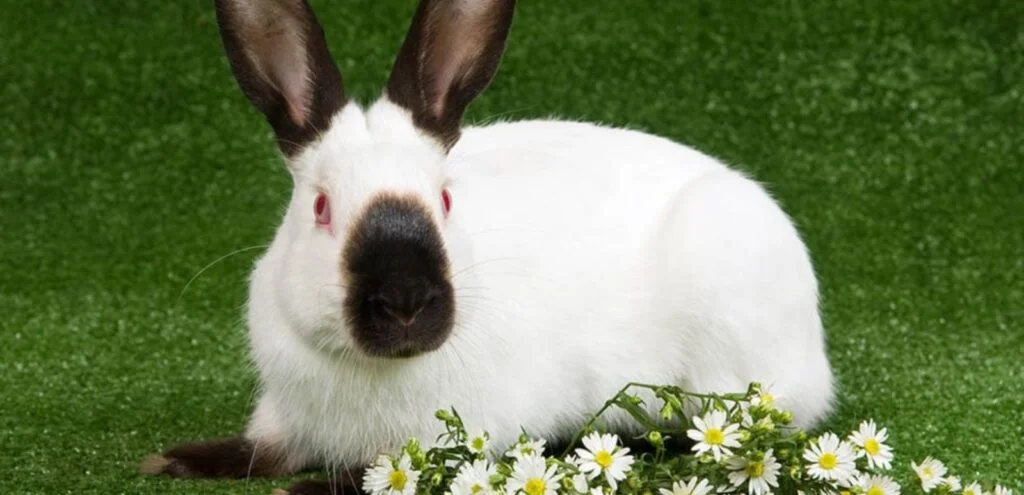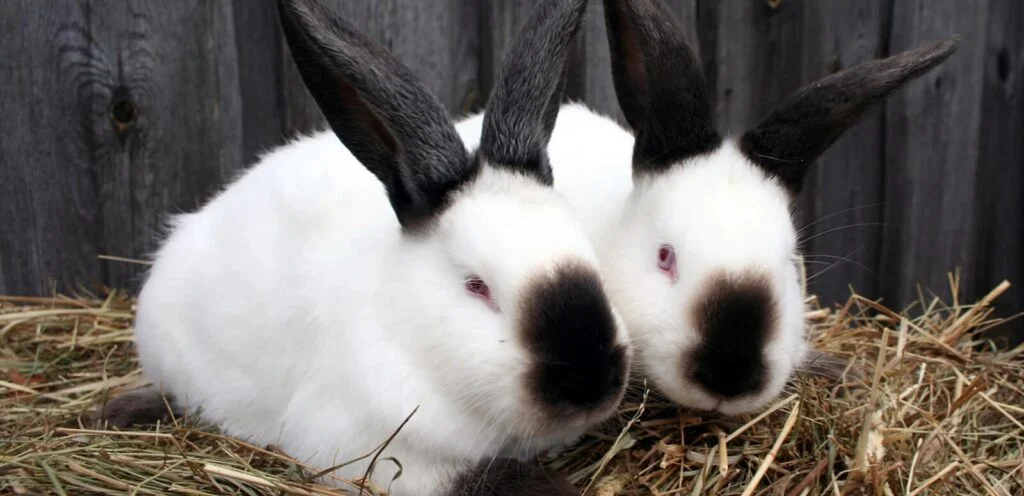American Himalayan Rabbit | The Color-Pointed Rabbit Breed
As its name suggests, the American Himalayan Rabbit is and will be regarded as a small to medium breed due to its unique physique, favorable nature, and exquisite fur color. Its body and ears are slender and its coat smooth and short—white, sprinkled with dark points on the ears, nose, feet, and tail which make it comparable to Himalayan coloration seen on other animals like cats. Known colloquially as the ‘Himalayan,’ it is one of the oldest domesticated rabbit breeds and has a long history.
Originally bred for consumption and fur, the American Himalayan is popular now both as a pet and as a show rabbit due to its gentle power and ease of care. This guide aims to help you make up your mind or incorporate the rabbit into your home by providing crucial information about its origins and care tips.

The American Himalayan Rabbit’s History
The American Himalayan rabbit can be traced back to the Himalayas and China. Its development seems to span many centuries. The breed was afterwards introduced to Europe and received selective breeding. From Europe, the rabbit later found its way to North America. It was in the early 1900s that American breeders started working on the rabbit. Initially, these rabbits were bred for meat and fur but the Himalayan breed was unique due to its coat coloration and gentle nature.
American Himalayan rabbit remains popular to this day. This is due to its unique charm and beautiful appearance. This breed is cherished for its historical importance and the rabbit to pet and show enthusiasts. Due to the American Himalyan rabbit’s detailed breeding process, it’s sweet temperament and striking colors has made it popular with many people.
Classification of American Himalayan Rabbits
By Purpose
The American Himalayan rabbit was initially bred for the practical purposes of meat and fur production. However, because of its smaller size and lightweight bone structure, it is less efficient for these uses compared to specialized meat breeds. Currently, this breed is primarily kept as a companion animal or for exhibition purposes. Its calm, gentle temperament makes it a wonderful pet, particularly for children, elderly persons, and novice pet owners. In competitions, American Himalayans are evaluated mostly on color-point precision, body condition, and disposition, which keeps them popular in the show ring.
By Size
As a small breed, the American Himalayan rabbit has an average weight range of 2.5 to 5 pounds when grown. The body is long and slender with fine bones and a well balanced structure. Unlike compact breeds, the build of the Himalayan appears elongated and cylindrical, improving the clean lines of its coloration. This shape further aids the breed’s soft, short fur and delicate appearance, giving it a distinctive look among other rabbits.
Most Popular American Himalayan Rabbit Characteristics
Similar to the case of Siamese cats, the American Himalayan Rabbits have the fur color patterning of a cat and its pointed coloration is the most defining characteristic of the breed. The base coat of the rabbit is white, while the ears, nose, feet and tail are marked as dark. The markings, also referred to as ‘points’, can be black, blue, chocolate or lilac, with the most common being black. They are also known to possess striking deep ruby red or pink eyes. The breed’s coat is smooth, fine, and short which does not require a lot of grooming.
As far as temperaments are concerned, American Himalayans are known for being loving, gentle and friendly. They appreciate human company and are usually happy to be carried, sat on or to simply rest in someone’s lap. The intelligence of the breed also makes it easy to litter train them and teach them basic behaviors which adds to their appeal for some. These calm rabbits are rarely aggressive in nature, making them well-suited for children or novice rabbit owners.
Explore Other Popular breeds
Factors to Choose an American Himalayan
There is some important American Himalayan Rabbit care tips you need to understand before selecting one for adoption. Though they are of a smaller size, they still need sufficient room for exercise and for mental stimulation. An indoor cage enclosure with the appropriate size, coupled with supervised playtime in pet-proof area is what they need. Their little frames do make them breakable so they should be handled with utmost care hence are more suitable for older children or adults.
In terms of diet, they require a balanced diet with the prominent being hay (fresh Timothy hay is usually recommended), herbs, good-quality rabbit pellets, and leafy greens. Like any other animal, fresh water should be available at all times. Social by nature, these bunnies require for stimulation and interaction. Regular dental health checks by a veterinarian also enable detecting any problems occurring before they worsen. Overall, American Himalayans are wonderful companions when looked after properly.
American Himalayan Ownership Responsibility
An American Himalayan Rabbit must be cared for in manners such as maintaining a clean, hygienic, spacious and stimulating environment. Their diet should mainly involve fresh hay as well as some rabbit-safe vegetables and healthy pellets. Sugary treats must be absolutely avoided and monitored in portion sizes to prevent obesity.
Weekly grooming is not a requirement, but it is recommended to brush the rabbit at least once a week. With their fragile bones, proper lifting methods include always supporting the body. However, gentle handling is preferred as well. American Himalayans will bring happiness to the caregivers and in return will need proper equine care. On average, these rabbits require close attention to care for。
Fun Facts About the American Himalayan
- One of the Oldest Breeds
The American Himalayan Rabbit is considered one of the oldest domesticated rabbit breeds, with a history that spans centuries. Its exact origins are debated, but it has remained a favorite due to its consistent traits and friendly nature. - Color Changes with Temperature
One of the coolest features of this breed is that its color points (ears, nose, feet, tail) can darken or lighten depending on the temperature. Cooler climates make the dark areas more pronounced, while warmer temperatures may cause them to fade. - Not Actually from the Himalayas
Despite the name, the breed is not proven to originate from the Himalayan mountains. Some theories suggest it came from Asia, while others claim a South American origin—its true roots are still a mystery! - Striking Red or Pink Eyes
The American Himalayan Rabbit has bright red or pink eyes, giving it a unique and memorable look. This eye color is common in albino or pointed breeds and adds to its exotic appeal. - Color Varieties Recognized by ARBA
The American Rabbit Breeders Association (ARBA) officially recognizes four point colors for the breed: black, blue, chocolate, and lilac. Each variation gives the rabbit a distinct and elegant appearance.

FAQs About American Himalayan Rabbit
Conclusion
As captivating as it is attractive, the American Himalayan Rabbit possesses a gentle history that has morphed from an utilitarian approach to an accomplished show piece and companion. It is gentle in temperament and easy to care for, making the American Himalayan pet suitable for all ages. By providing proper nutrition, social interaction, and regular vet visits, owners can ensure their rabbit lives a long, happy life. Whether looking for the perfect family friend or exhibition piece, the American Himalayan will be a source of joy with each hop.
